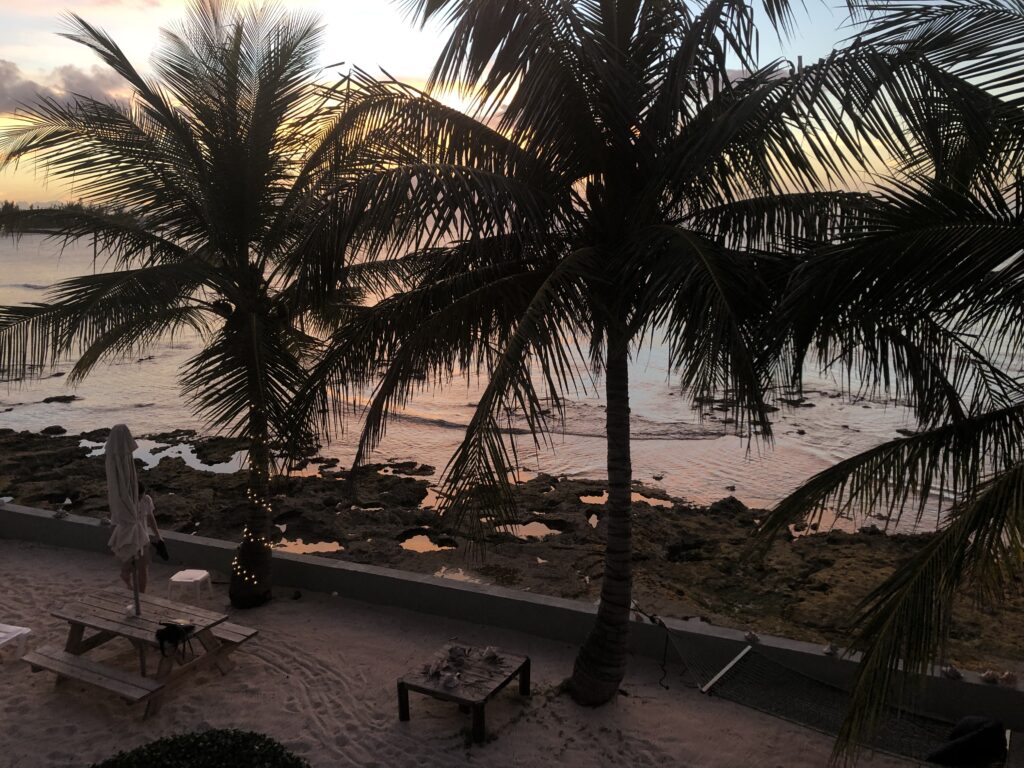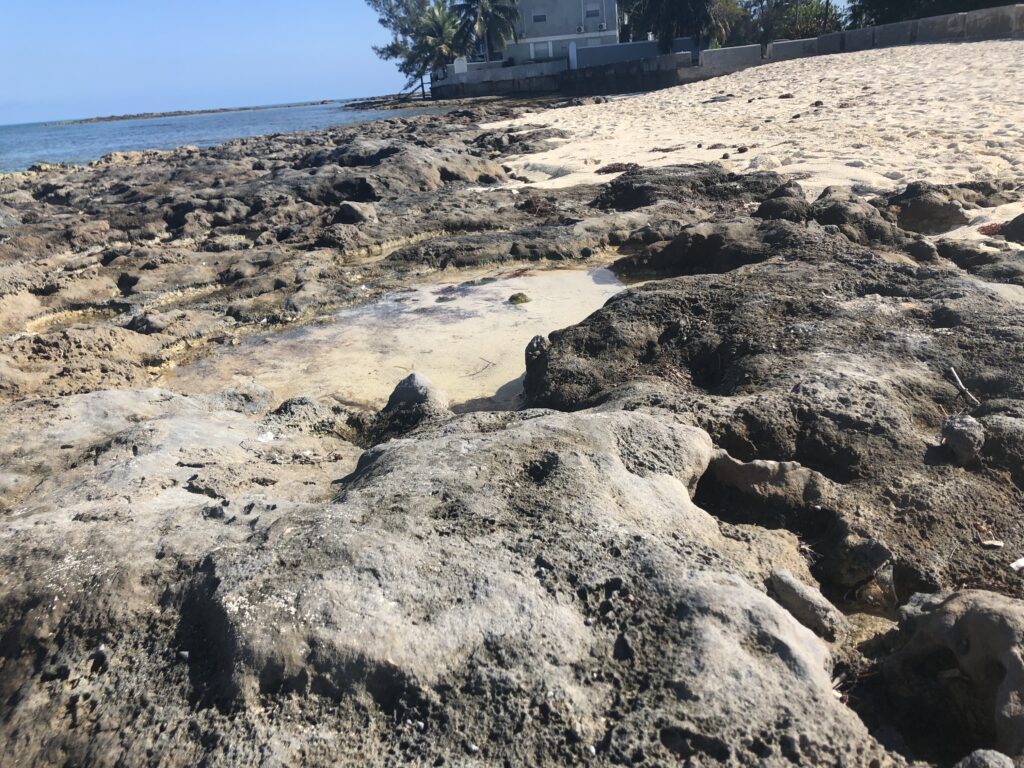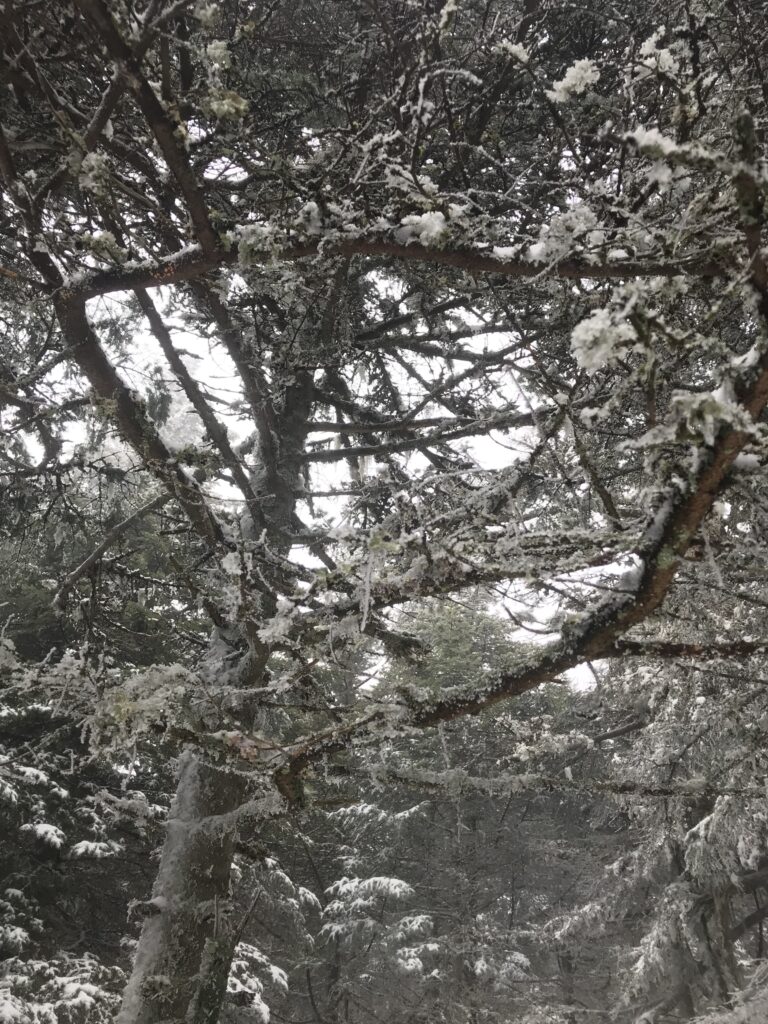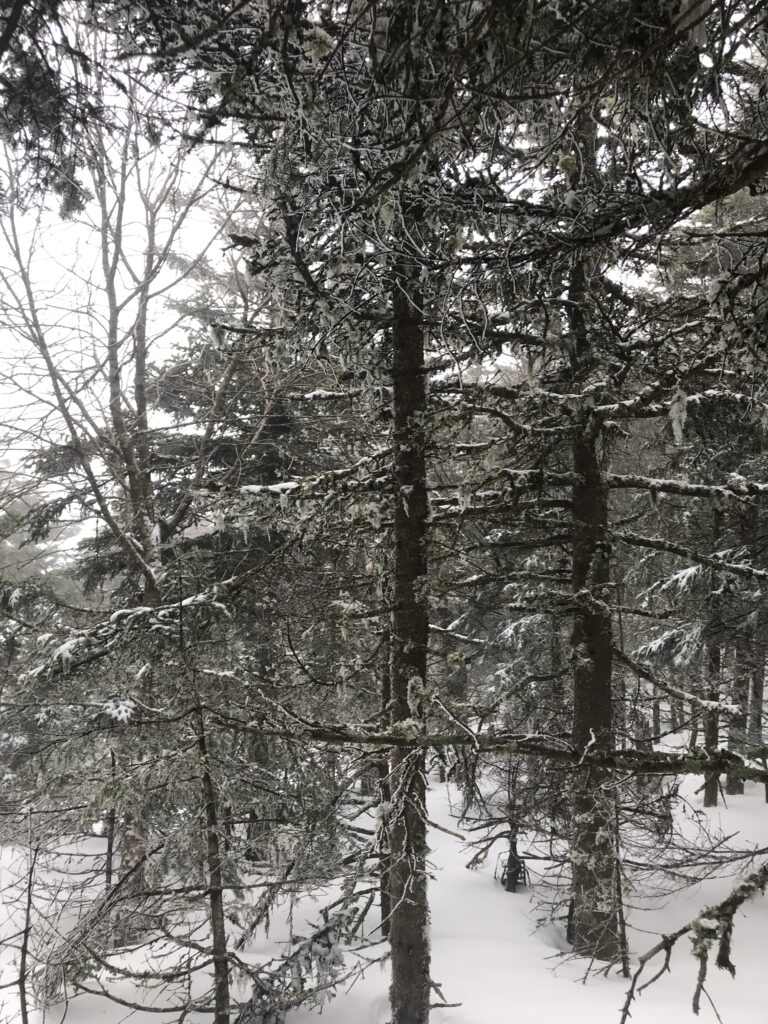I spent my spring break this year in a small town outside of Nassau in New Providence, Bahamas. The phenology I observed over spring break was most definitely different than that I have observed so far this semester in Burlington. The most obvious difference was the weather, the last time I went to my spot in Centennial Woods the weather was around 20 degrees and there was over a foot of snow on the ground. My phenology spot over break was the beach in front of the AirBnB where I stayed over break. The weather was 80 degrees and sunny with a slight breeze. My phenology spot in Burlington is primarily northern hardwood species of trees, while the only species of tree visible at my break phenology spot was the Arecaceae, or Palm Tree.
The water body in my Burlington phenology spot is Centennial Brook, a stream that runs just down a small embankment from the northern hardwoods. New Providence, the island on which my phenology spot was this break is nestled in between the Gulf of Mexico and the North Atlantic Ocean, and my spot was right on the ocean.
My phenology spot in Burlington is home to several native species of the Northeast United States, while I have had a hard time tracking these species, I know from other students whose phenology spots are in Centennial Woods that there are several species of native birds, along with White-tailed Deer, Porcupines, and Snowshoe hares that can be found around my phenology spot. The only wildlife I found over break were several small snails embedded in the dead coral in my phenology spot, peeking out of the ocean.
Pictures!!!!





